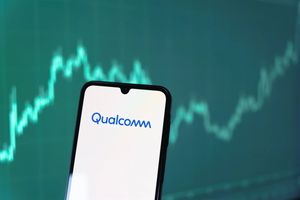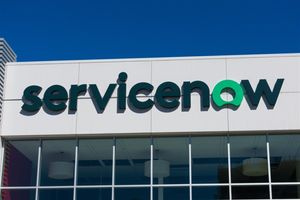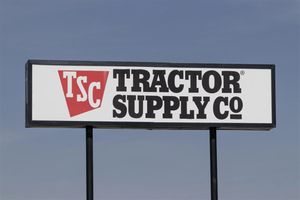Expect 8%-12% adjusted EPS growth 2021-2024
Expect to deploy >$6 billion 2022-2024 for growth investments and returning cash to stockholders
Molecular recycling technologies create potential for greater than $450 million of adjusted EBITDA by 2026
Today Eastman Chemical Company (NYSE: EMN) hosted its virtual and in-person 2021 Innovation Day. During the meeting, members of Eastman’s executive management team highlighted key elements of the company’s business strategies and detailed its pathway to deliver growth through 2024.
“Over the past several years, we have executed a strategy to position Eastman as a leading material innovation company. Central to our strategy is our compelling, innovation-driven growth model, which is succeeding in creating consistent, sustainable value for all our stakeholders,” said Mark Costa, board chair and chief executive officer. “We are leveraging our unique model to create value from disruptive macro trends, which we expect to be a strong contributor to Eastman’s growth over the next three years.”
Costa continued, “One area in particular that we are very excited about is our leadership position in the circular economy. Through our competitively advantaged molecular recycling capabilities, we are providing solutions for the plastic waste and climate crises while also creating a new vector of growth that has the potential to deliver greater than $450 million of adjusted EBITDA by 2026.”
In addition, Costa detailed how the company is strengthening execution across the organization to convert growth to value. This includes building application development, technology, and commercial capabilities, continuous cost structure improvement, and portfolio and site optimization. Taken altogether, Eastman expects:
- Adjusted earnings per share compounded annual growth rate of 8 to 12 percent over the next three years
- Revenue growth in specialty products that is two times underlying markets
- An increase in corporate adjusted EBITDA margin to approximately 23 percent
- Greater than $1.6 billion of annual operating cash flow
- Approximately $2 billion of share repurchases in 2021-2022
- Return on invested capital to be between 12 to 15 percent, which is significantly above cost of capital
Stating that sustainability and Environmental, Social, and Governance (ESG) are integrated into the company’s growth plans, Costa detailed the company’s path to achieve carbon neutrality by 2050. This includes increased energy efficiency, process transformation, focus on renewable energy, and by leveraging technology breakthroughs.
Sustainable Innovation
Steve Crawford, executive vice president, technology and chief sustainability officer, discussed how Eastman is leveraging its growth model to accelerate and deliver sustainable innovations and create a competitive advantage.
“The triple challenge created by the climate, plastic waste, and growing population crises has intensified the need for sustainable innovations. To address these issues, we have aligned our top innovation platforms with these significant sustainability drivers,” said Crawford. “We are contributing to solutions that build a better world and building a strong pipeline of growth for Eastman that is on track for new business revenue from innovation approaching $700 million in 2024.”
Crawford further detailed the sustainable and competitive advantages to Eastman’s molecular recycling technologies, including a lower carbon footprint, the ability to recycle hard-to-recycle waste, no compromise in performance, and security of supply. He discussed how the circular economy is also creating new growth opportunities for Eastman’s biodegradable cellulosic polymers.
Outlining how Eastman intends to achieve its aggressive climate goals, Crawford detailed the company’s action plans for reducing its carbon footprint by 2030 and achieving carbon neutrality by 2050.
Advanced Materials
Brad Lich, executive vice president and chief commercial officer, detailed the business strategies to build on the performance of the Advanced Materials segment, which consists of specialty plastics, advanced interlayers, and performance films product lines. Lich discussed how the company’s innovation-driven growth model is deployed throughout the segment, which has enabled Advanced Materials to grow its premium offerings, outperform key underlying markets, and deliver strong adjusted EBIT growth.
“Advanced Materials is a great specialty business that is well positioned to accelerate its strong track record of growth as global sustainability macro trends gain momentum,” said Lich. “In response to the global plastic waste and climate crises, customers and brands are looking to increase materials with recycled content. Through our circular recycling technologies, we are uniquely positioned to take materials that were otherwise bound for the landfill and deliver high-quality products without compromising quality or performance.”
Earlier this year, Eastman announced that it is moving forward with its circular economy project in Kingsport, Tenn., which includes construction of the world’s largest polyester material recycling facility and a Tritan™ polyester polymerization plant. The project is expected to begin producing at commercial quantities in 2023. In addition, Lich said the company is in active discussions for additional projects in Europe and the U.S. and expects to announce at least one additional circular economy project in the first half of 2022.
Advanced Materials expects approximately 15 percent adjusted EBIT CAGR in 2021-2024.
Additives & Functional Products
Dr. Lucian Boldea, executive vice president, Additives & Functional Products and Chemical Intermediates, discussed actions taken in the Additives & Functional Products segment over the past year that have resulted in a more focused and resilient portfolio. These actions include the divestiture of non-strategic businesses with approximately $1.1 billion of revenue expected to be completed in first quarter 2022. The focused, more streamlined segment now consists of coatings additives, care additives, animal nutrition, and specialty fluids businesses.
Boldea discussed how the formula for growth in Additives & Functional Products is the combination of volume growth that is above key underlying markets, innovation initiatives leveraged to sustainable macro trends, and Eastman’s competitive advantage from greater scale and more significant integration than competitors.
“Eastman’s innovation-driven growth model is clearly at work in Additives & Functional Products and is driving strong growth of high-value products across the segment,” said Boldea. “Our growth efforts are focused on multi-generational product planning and new offerings tailored to macro trends, coupled with efficient market execution at the customer level.”
A global leader in many of the markets it serves, Additives & Functional Products expects 6 to 8 percent adjusted EBIT CAGR through 2024.
Chemical Intermediates
Boldea also outlined the critical role that the Chemical Intermediates segment plays in supporting specialty growth through scale and integration, feedstocks for circular recycling facilities, and its contribution to Eastman’s strong cash flow generation. The company has taken many actions to improve the segment, which has resulted in an improved cost structure, product mix improvement, and reduced volatility. The company plans an ethylene to propylene project that will enhance the segment’s capability to produce low-cost propylene and further reduce ethylene-related volatility.
As a result of these actions, the company projects future normalized adjusted EBIT for Chemical Intermediates to be approximately $325 million with reduced volatility.
Fibers
According to Crawford, the company’s Naia™ cellulosic fiber is well positioned to capitalize on many of the fashion apparel mega trends, including a preference for sustainable materials. “Naia is now growing at an incredibly high pace and gaining scale. From 2018, we have grown by 20 percent, including the impact of COVID,” said Crawford.
He added that growth in the segment’s textiles products are growing at 2x underlying markets. In part due to this growth, Eastman expects the segment’s adjusted EBIT CAGR to be approximately 5 percent through 2024.
Financial Outlook
Willie McLain, senior vice president and chief financial officer, shared how Eastman’s financial position and disciplined capital allocation have delivered value over the past several years and remain a point of strength for the company. He added that the company expects to deploy greater than $6 billion during 2022-2024 for growth investments, capital expenditures, and returning cash to stockholders.
“Given our strong balance sheet and cash generation, we are accelerating our track record of capital returns,” said McLain. “We intend to maintain a capital structure that provides the financial flexibility to invest for growth and reward stockholders. We remain committed to returning cash to our stockholders through dividends, which we intend to grow as the company grows, and share repurchases.”
The company recently announced that it has increased its dividend for the 12th consecutive year, and that it expects to repurchase approximately $2 billion of its shares during 2021-2022. This includes a recently announced $500 million accelerated share repurchase program that is expected to be executed in fourth quarter 2021. In addition, Eastman has also announced that its Board of Directors has increased the company’s share repurchase authorization by $2.5 billion, which enables Eastman to continue delivering returns to stockholders in 2023 and beyond.
Public Webcast Replay and Slides
This release should be read with the public webcast presentations and slides to which it relates available at investors.eastman.com, Events & Presentations.
2021 Innovation Day Media Kit
For more on 2021 Innovation Day, visit Eastman.com/investors.
Glossary of Terms and Acronyms
Certain terms and acronyms used in this release, including “circular economy”, “EBIT”, “EBITDA”, “EBITDA margin”, “CAGR”, and “return on invested capital”, are defined in the Appendix at the end of the presentation slides.
Non-GAAP Financial Measures and Reconciliations
All earnings and cash flow measures in this release and in the Innovation Day presentations and slides are non-GAAP and exclude certain items. Reconciliations to the most directly comparable GAAP financial measures and other associated disclosures, including a description of the non-GAAP measures and the excluded and adjusted non-core, unusual, and other items, are available in the Appendix at the end of the presentation slides and in the “Management’s Discussion and Analysis of Financial Condition and Results of Operations” sections of the Company’s Forms 10-K and 10-Q filed with the SEC for the periods for which non-GAAP financial measures are presented available on the Eastman web site at www.eastman.com in the Investors, SEC filings section. Projected future earnings exclude any non-core, unusual, or non-recurring items, and projections of future earnings per share assume that the adjusted tax rate for the most recent completed period will be the actual tax rate for the projected periods. Earnings and other financial results forecasts do not include non-core, unusual or non-recurring items, and we accordingly are unable to reconcile projected earnings excluding non-core, unusual or non-recurring items to projected GAAP earnings without unreasonable efforts.
Forward-Looking Statements
This news release and the related Innovation Day presentations and slides include forward-looking statements concerning plans, expectations, and assumptions for Eastman Chemical Company. Such plans, expectations and assumptions are based upon certain preliminary information, internal estimates, and management assumptions, expectations, and plans, and are subject to a number of risks and uncertainties inherent in projecting future conditions, events, and results. Actual results could differ materially from expectations and assumptions expressed in the forward-looking statements if one or more of the underlying assumptions or expectations prove to be inaccurate or are unrealized. Important factors that could cause actual results to differ materially from such expectations are and will be detailed in the company's filings with the Securities and Exchange Commission, including the most recent Forms 10-K and 10-Q filings available on the Eastman web site at www.eastman.com in the Investors, SEC filings section, and in the Innovation Day presentations and slides detailed above.
Founded in 1920, Eastman is a global specialty materials company that produces a broad range of products found in items people use every day. With the purpose of enhancing the quality of life in a material way, Eastman works with customers to deliver innovative products and solutions while maintaining a commitment to safety and sustainability. The company's innovation-driven growth model takes advantage of world-class technology platforms, deep customer engagement, and differentiated application development to grow its leading positions in attractive end-markets such as transportation, building and construction, and consumables. As a globally inclusive and diverse company, Eastman employs approximately 14,000 people around the world and serves customers in more than 100 countries. The company had 2020 revenues of approximately $8.5 billion and is headquartered in Kingsport, Tennessee, USA. For more information, visit www.eastman.com.
View source version on businesswire.com: https://www.businesswire.com/news/home/20211207005908/en/
Contacts
Media:
Tracy Kilgore Addington, 423-224-0498
tracy@eastman.com
Investors:
Greg Riddle, 212-835-1620
griddle@eastman.com





